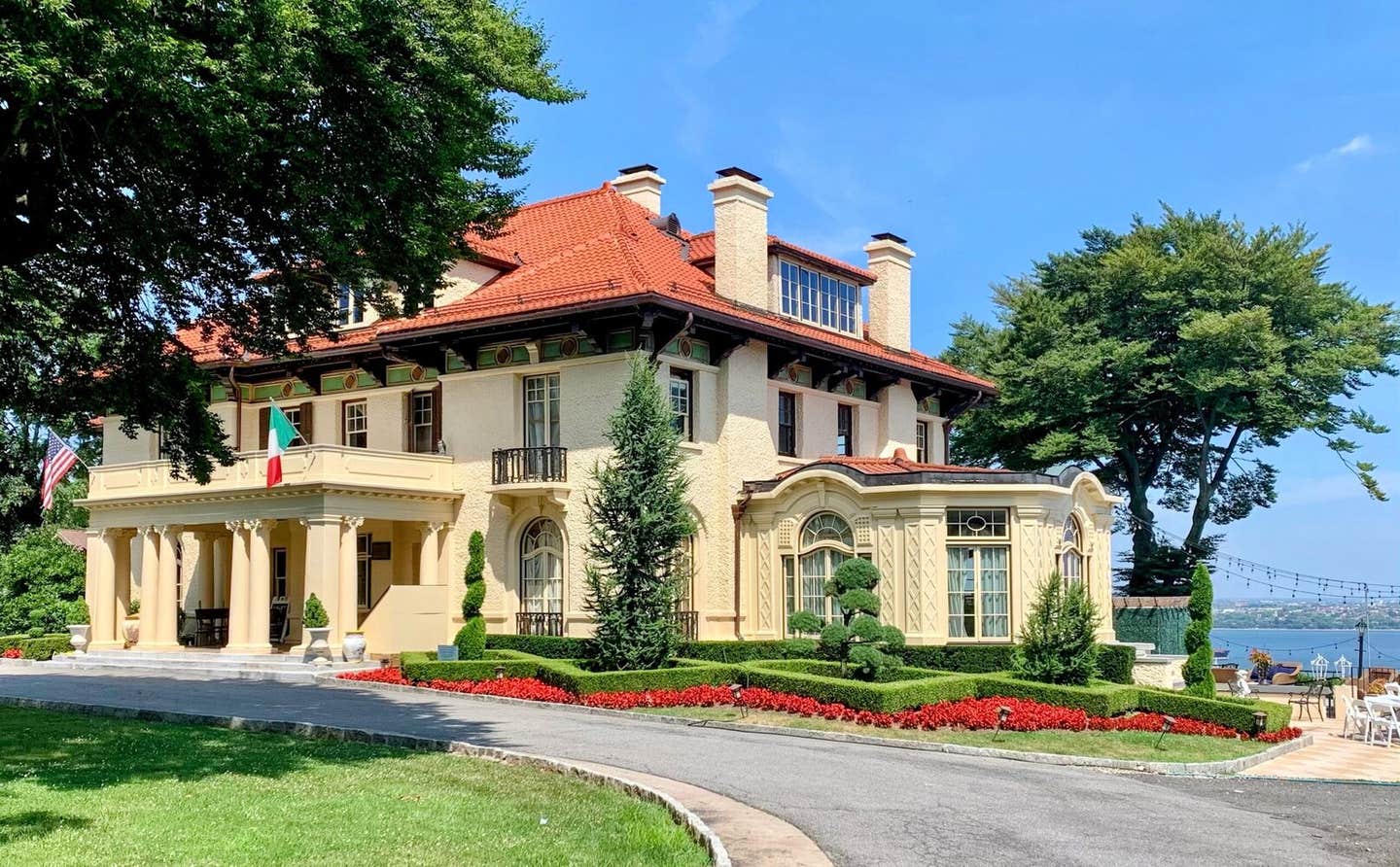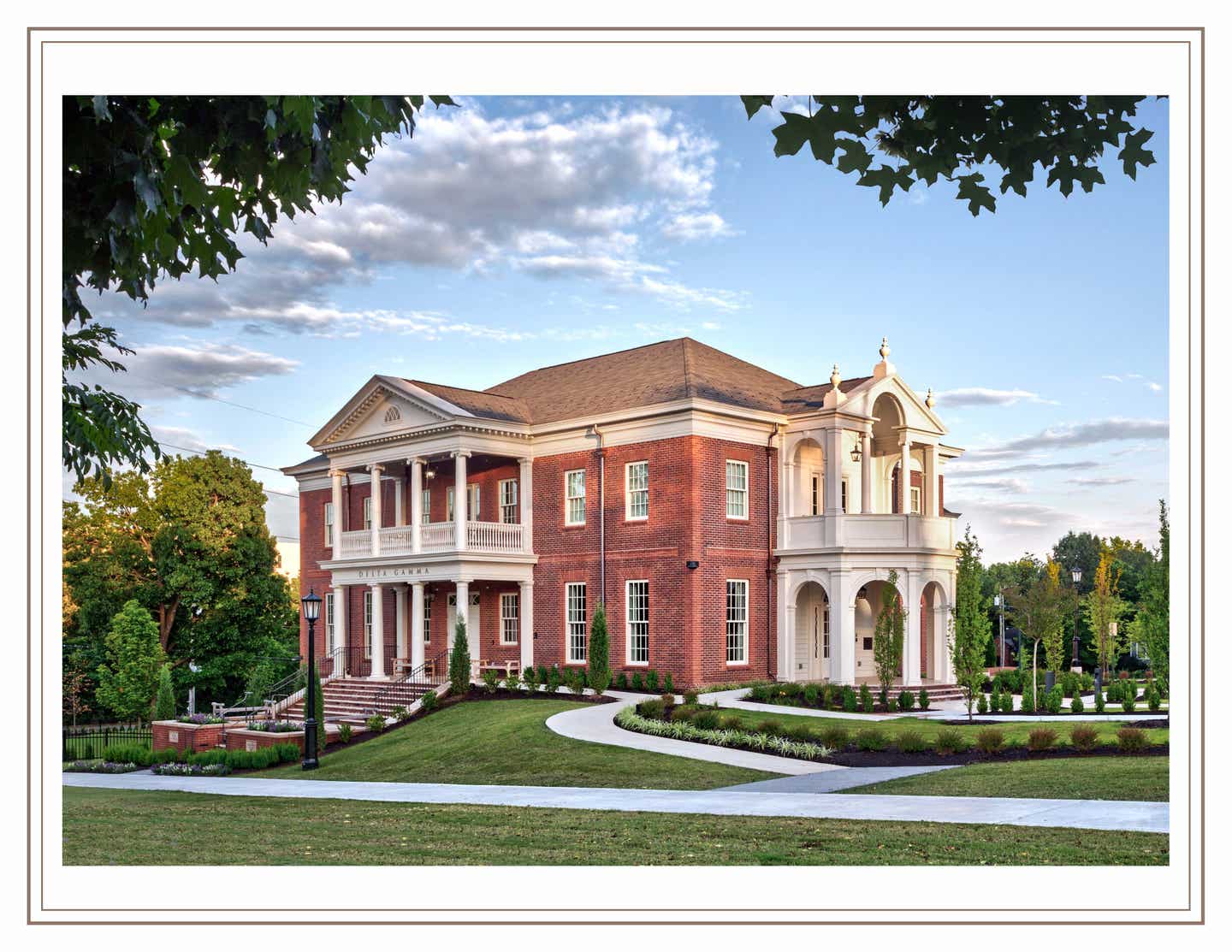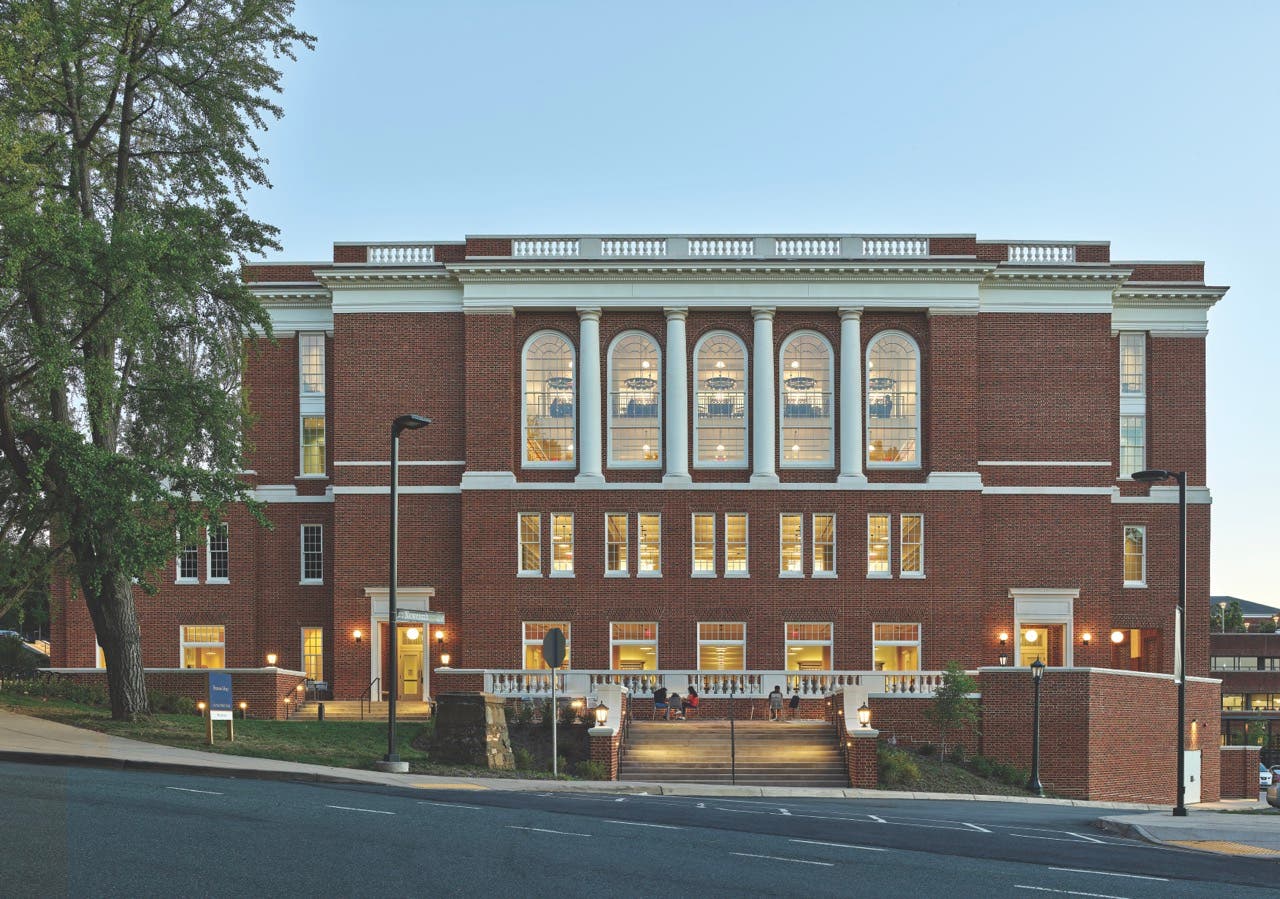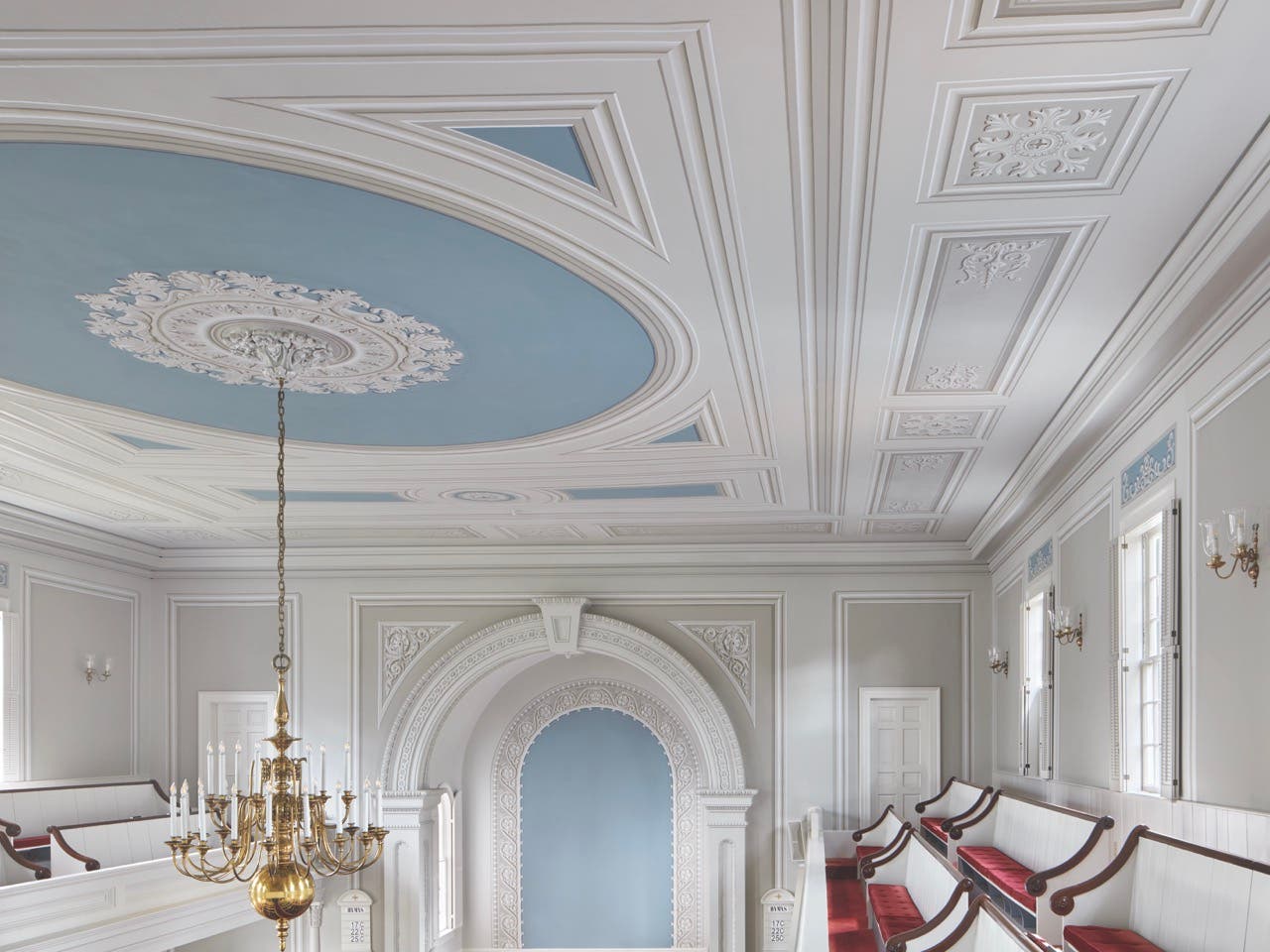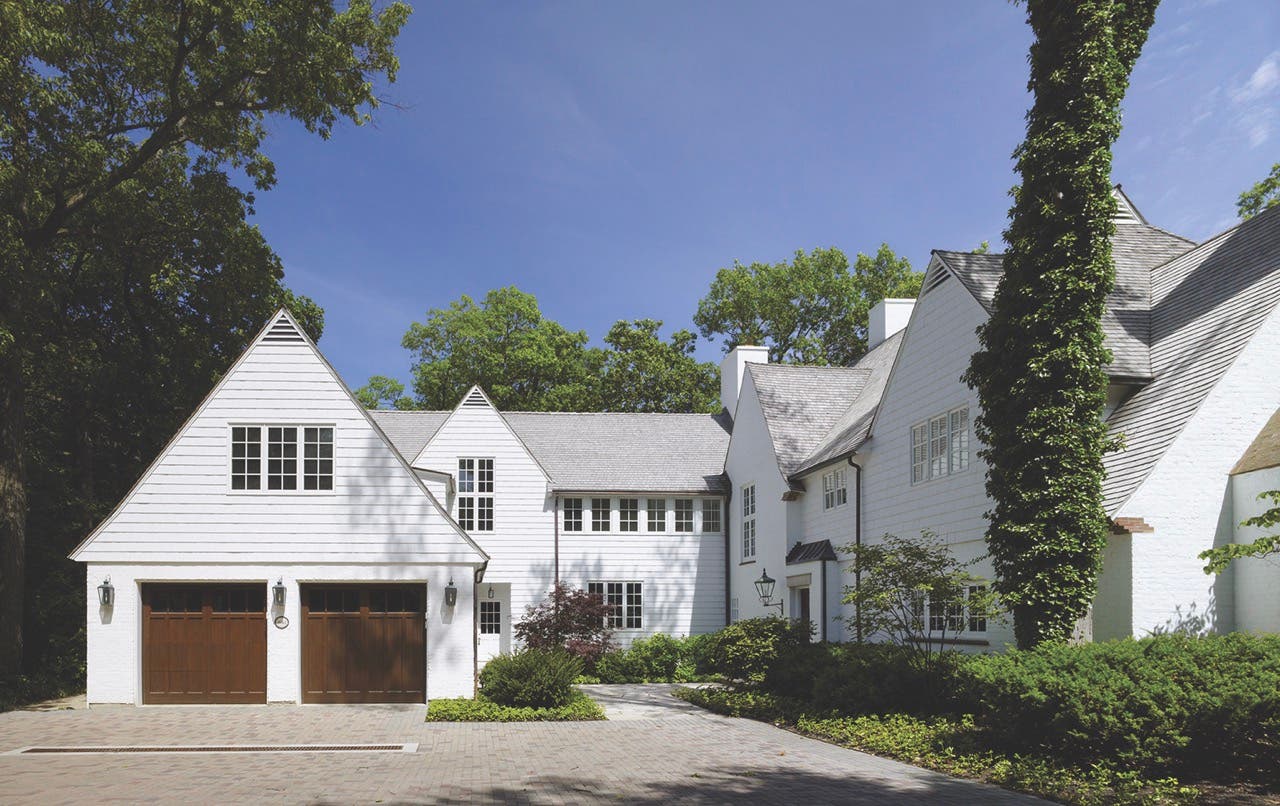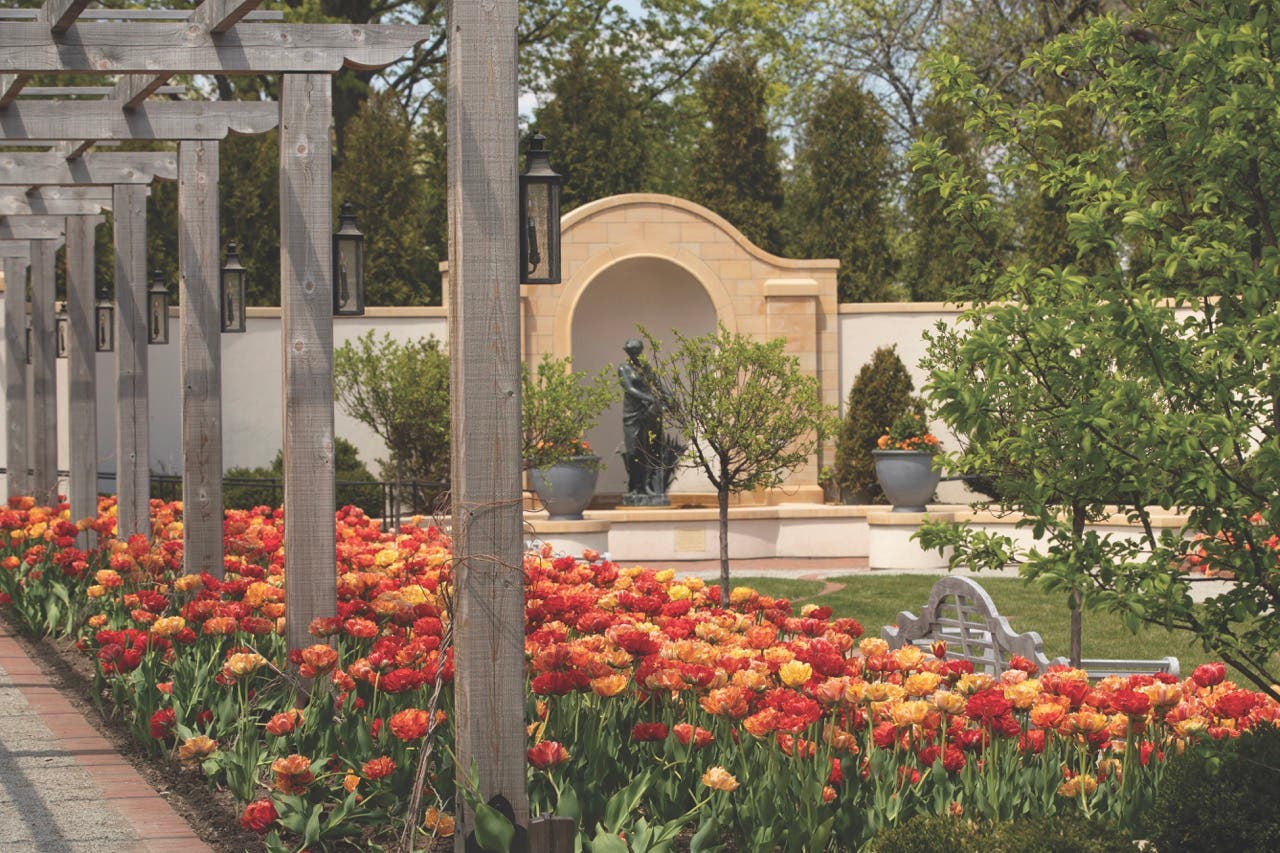
Landscapes/Streetscapes
Artistic Grounds
Photos by Scott Shigley and courtesy of Hoerr Schaudt
Who would guess that the most prosaic of groundcovers —plain gravel— is a sensory pleasure? Yet here, at a formal garden next to a stately Wisconsin art center, gravel—with its crunchy sound and cloud-like colors—is proven to encourage serenity.
arrival, and centered on the stone wall is a statue of a water nymph - the
Greek mythology keepers of fresh water sources.
The calming effect of gravel (which can trigger the sensory phenomenon known as the autonomous sensory meridian response, or ASMR) is just one of the unexpected delights in the flourishing garden at the Paine Art Center in Oshkosh, Wisconsin.
Beauty abounds in all its forms. Visitors breathe in the sweet scent of flowers and flowering shrubs. A carved niche in a wall holds petite visual treasures. Even the weariest eyes are eased by the colors and shapes of plantings and sculptural artworks—including in the dead of winter—all of it designed to reflect the four seasons that occur in this part of Central Wisconsin.
There are larger visual delights, as well. A cast iron fountain, centrally positioned in the garden, possesses an almost hypnotic draw. Encircling the space are stucco walls that carry the eye with calming curves and sublime artistry. /
“The fountain is the cherry on top,” says John Evans, LEED AP, a partner at the Chicago-based landscape design firm Hoerr Schaudt and the project manager for the garden. Evans, working with senior partner Doug Hoerr, oversaw the garden’s completion as an extension of the elegant Paine Art Center. The garden, with a centered green lawn, is bordered by four-season gardens, each one reflecting a particular time of year.
While the four-season garden is pure, sublime nature, science and design principles polish it for maximum effect on the human response. Turn a bit, and you will see a bosque of honey locust trees that form a canopy roof over the garden. As visitors stroll down the gravel paths that wend through the space, a growing sense of quiet excitement blossoms into self-reflection and serenity.
“The canopy of trees makes you feel like you’re still in an interior space, an extension of the event space itself. It’s programmed very thoughtfully,” Evans says. Besides its beautiful looks, the fountain offers the soft sounds of falling water, and tactile features.
Eventually, the fountain gently pulls the viewer’s eye toward the axial garden, with its central lawn spine extending through the middle. On each side is a timber pergola to connect the garden with the events space, a former coach house. Vertical landscaping adds height to the area.
architecture of this English-inspired country estate. Nathan Paine, the original
owner, was a leader in the timber industry and sourced the stone and wood
for the estate from the region. The new wood pergolas continue the estate’s
architectural story while bringing more color, fragrance and interest to the
garden from spring to early summer when the Wisteria vines bloom.
Hoerr Schaudt was asked to create the garden as an extension of the events center; experientially it presents as an exterior room. The designers followed one guiding principle: to show the garden through all four seasons. “The seasons impact every day of a person’s life,” Evans says. “There are seasonal rotations; colors change. Having a four-season garden, and making sure that all are represented in a very impactful way, was critical.” In effect, it is a natural gallery wall with a rotating exhibit, Evans says, drawing at least 50,000 visitors a year.
The indoor events center and gallery occupies the estate’s coach house, built in the 1920s to accompany the main house, all built in English Country style. The English Tudor house is a beauty, its timber-trimmed exterior harkening back to the wood mill that gave the owners, Nathan and Jessie Kimberly Paine, prominence in the city. The house is now a museum which showcases architecture, furniture, and art. One of the components of the main house – a timber purlin – was pulled from the house for use as a pergola. A bonus for a garden visitor: This kind of period detail demonstrates how lumber used was more than 100 years ago.
While the main house and coach house serve their distinct purposes, the formal garden, with its tree canopy roof, can be changed to suit the moment – perhaps for a wedding – by adding potted plants and furniture. “It can be furnished for any event,” Evans says. “It’s like a vanilla box; it can be programmed in any number of ways. It unfolds in layers; it’s never overwhelming.”
Besides showcasing Wisconsin’s hardy plants, the formal garden encourages creativity with colorful, unexpected combinations of blooms, says Paine’s horticulturist, Sheila Glaske. “The garden provides an open palette for us,” Glaske says, speaking of her work with Executive Director Aaron Sherer. “It gives us the opportunity to change botanical exhibitions with the seasons, and its permanent structures and plants provide a great backdrop for those changing plantings.”
In spring, thousands of tulips bloom, an almost-overwhelming effect that transitions in summer to a lush display of dahlias, zinnias, and more annuals. Fall brings a new artful display of such plants as kale, mums, and ornamental grasses.
The four seasonal gardens gently flow visually from one to the next, just as seasons shift in life. “They all have their own unique character and feel,” Evans says. “All work together. Each is unique, but the way the circulation patterns are set up, it’s a very thoughtful flow.” TB




